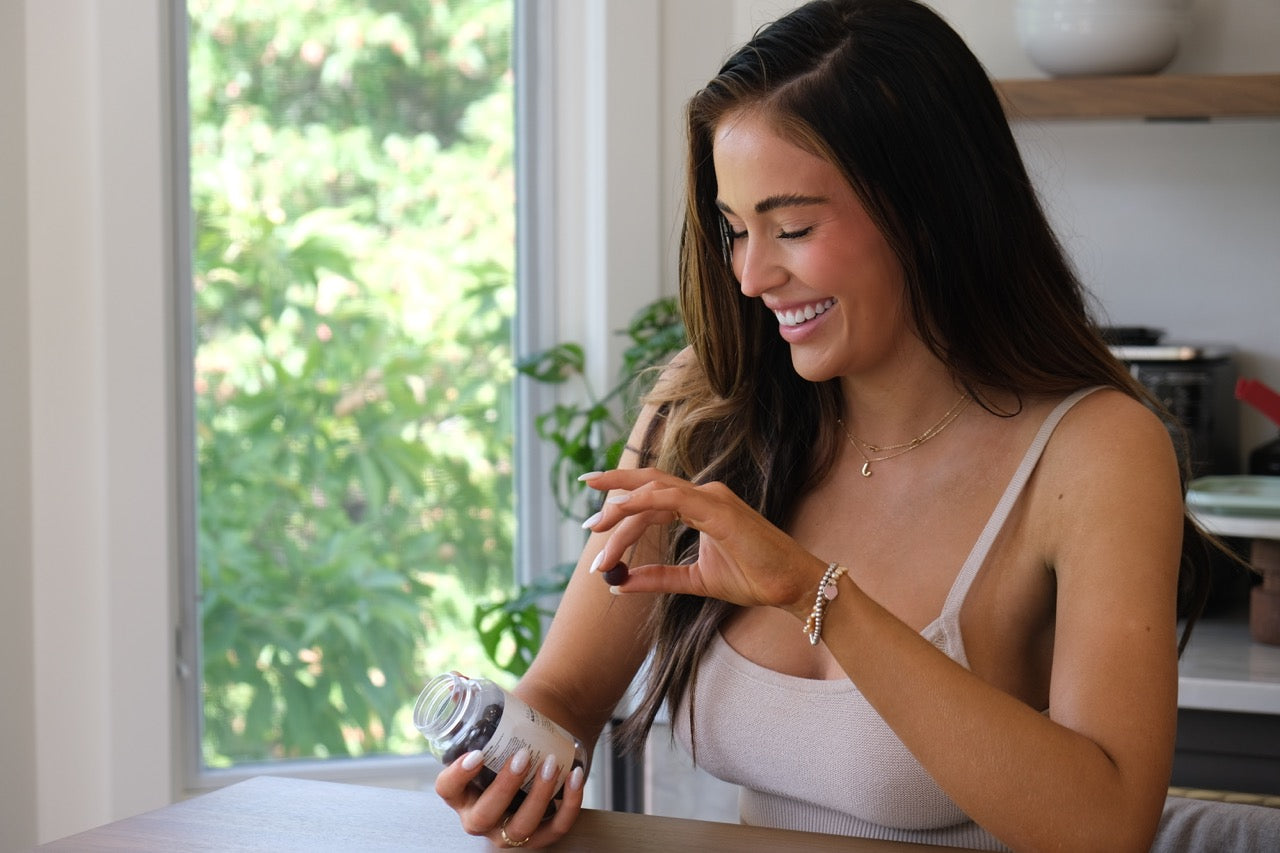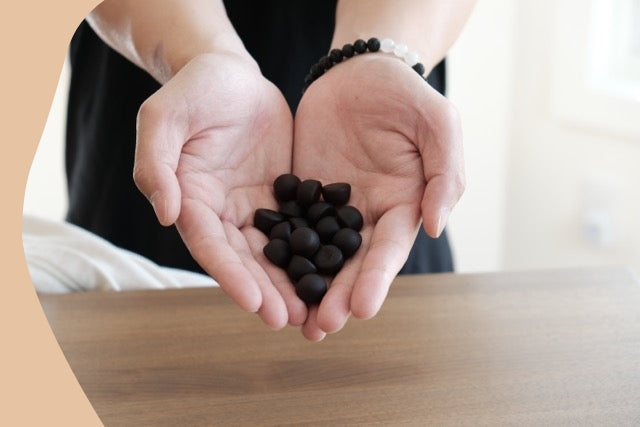
10 Important Benefits of Tea Tree Oil
If you love browsing the latest health trends, you’ve probably heard of tea tree oil. In fact, the tea tree oil industry is estimated to be worth about 39 million U.S. dollars. That’s a whole lot of tea tree oil!
So, what are people using this oil for? What does tea tree oil do exactly?
In this article, we’re going to dive into everything tea tree oil. From tea tree oil uses to the basics about tea tree oil (what is it even?), we’ve got it all below. Maybe you’ll even find out that your health and wellness can benefit from this incredible all-natural oil.
What is Tea Tree Oil?
Tea tree oil is derived from the leaves of a tea tree, also known as Melaleuca alternifolia. This tree is native to New South Wales and Southeast Queensland, Australia. And no, despite its name, this tree does not contribute to the making of black or green tea (a bit confusing - isn’t it?).
Native Australians actually used tea tree oil within their traditional medicinal system. They would crush the leaves and then extract the oil. This oil was frequently used for treating coughs, colds, and wounds.
Interested in using other oils for health and wellness? Essential Oils for Your Most Common Ailments
Tea tree oil entered the commercial market in the 1920s. But it wasn’t until the 1970s and 1980s that tea tree oil began to be produced in substantially large quantities. Come the 2000s, and tea tree oil has taken off, becoming worth millions of dollars. The forms of tea tree oil sold today come in both undiluted and diluted forms ranging from 5-50%.
But what’s the fuss about? What exactly are the popular and scientifically-backed tea tree oil uses?
10 Tea Tree Oil Benefits
1. It’s Antimicrobial
Research has shown that tea tree oil increased the effectiveness of handwashing cleansers, helping to eliminate E. coli. But E. coli isn’t the only bacteria that tea tree oil helps fight.
Tea tree oil has also found to be useful in killing S. pneumoniae and H. influenzae, common bacteria and viruses that cause the common cold and flu.
This property of tea tree oil further makes it a great disinfectant when it comes to cuts or wounds. Using tea tree oil on broken skin can lower your risk of infection.
2. Helps With Wound Healing
In a 2013 study, the use of tea tree oil reduced wound healing time in 9 out of 10 participants.
Other research has further shown that tea tree oil may help decrease inflammation, as well as activate white blood cells that help bump along the healing process.
3. Can Reduce Acne
Tea tree oil for acne can actually help reduce the severity and amount of acne lesions.
Get this: In one study, tea tree oil was found to be just as effective as benzoyl peroxide when it comes to treating acne.
Generally, for using tea tree oil for acne, you should seek out a tea tree oil acne-fighting gel at your local pharmacy. Yet, you can make your own at home! Mix together one part tea tree oil and nine parts water. From there, you can apply this mixture to your acne spots one or two times a day using a q-tip.
4. Gets Rid of Nail Fungus
Nail fungus isn’t exactly something you want. While it isn’t life-threatening by any means, it doesn’t look the most aesthetically-pleasing. Luckily, tea tree oil is an all-natural remedy that can help you fight nail fungus, ridding your nails of it within 3-6 months.
In fact, research showed that in one study 60% of individuals with nail fungus had full or partial resolution of it within six months.
For using tea tree oil on your nails, you can apply it directly to the area or mix it with coconut oil.
You might also want to check out: 7 Ways to Use Coconut Oil
5. Keeps Your Home Clean
I’m not kidding here. Tea tree oil uses don’t just come down to helping improve your health and wellness. It can also make an excellent chemical-free cleaner that you can use on almost any surface in your home.
To do so, combine 20 drops of tea tree oil with ½ cup of apple cider vinegar, and ¾ cup of water. Use directly on most surfaces, and ensure you dry it clean with a rag or cloth.
6. Reduce Inflammation
More specifically, tea tree oil benefits your skin health by decreasing skin inflammation. In other words, when it comes to treating dermatitis, tea tree oil might be just what you need.
For contact dermatitis, researchers found it alleviated associated symptoms by up to 40%.
In addition to helping with dermatitis, tea tree oil can help relieve inflammation caused by bug bites - such as those pesky and itchy mosquito bites!
7. Gets Rid of Dandruff
Dandruff isn’t exactly a dangerous condition. Yet, it can be straight-up irritating and even sometimes, embarrassing. It’s thought that adding a few drops of tea tree oil into your shampoo can help relieve dandruff. This might be particularly useful for those that fight seasonal dandruff in cold and dry climates, such as parts of Canada and the northern U.S.A.
8. Can Eliminate Mold: Veggies & Fruits
It’s tough to keep veggies and fruits on-hand.
Within a few days or a week, many of them tend to get moldy or start to show some kind of decay. Since tea tree oil boosts anti-fungal properties, it can actually help protect against mold on your delicious fruits and veggies! Try adding 5-10 drops of tea tree oil to your fruit or veggies, then rinse them and dry.
9. Might Improve Your Oral Health
Gingivitis is an inflammatory gum condition. By using a tea tree oil on the gums, the symptoms, including inflammation and bleeding gums, can greatly be reduced. It may also help improve bad breath!
10. Can Help with Head Lice
Experts have begun to dive into other methods to treat pesky head lice. Head lice continue to become more and more resistant to other treatment methods. Yet, experts have found some success with a combination of tea tree oil and lavender.
Who Shouldn’t Use Tea Tree Oil?
Generally, the use of tea tree oil is very safe.
However, there are a few precautions you’ll want to take note of before using it.
- Do not ingest tea tree oil. It can actually be very toxic when ingested.
- Do a skin test. Before using it for the first time (as you would with any new gel or cream), apply a drop or two to clean and healthy skin. Wait 24-48 hours to determine if there is any reaction.
- Dilute It. For those with sensitive skin, opt for more diluted tea tree oil. Less diluted varieties may cause irritation.
- Do not use on pets. Tea tree oil has actually been associated with nervous system issues in cats and dogs.
Tea Tree Oil: An All-Natural Solution
If you’re looking for new ways to combat your health issues, tea tree oil offers a non-chemical solution. There are so many benefits! It’s a great item to add to your medicinal or bathroom cabinet. We recommend choosing a more diluted form to start, especially if you’re hyper-sensitive.
This can lessen and prevent any unwanted allergic reactions. However, as mentioned above, it’s important to test it out on a bit of skin before you use it.
Related article: Upgrade your Beauty Game with These Products






